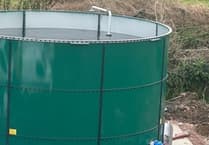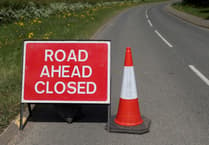NEWTON Abbot Civic Society is calling on people to give their views on the Local Plan that will have a vital role in planning issues for years to come:
The Local Plan review 2020-2040 is in its final stage, the public are able to respond until 13 March, after which feedback is considered before the revised document is submitted to the Secretary of State for signing off.
A review is due every five years, so ours is slightly out of date (Adopted Local Plan of 2014 - the stages of the review have happened beyond the five years, rather than within them).
The main Local Plan Review document is 179 pages long. Then there are appendices and accompanying policy documents. It is unlikely many people have time to read or digest all this in depth, so for most, the ‘where’ will likely be their focus.
There is a stronger focus on heritage in this revised document which is a positive.
With limited print space, we raise the spectre of Bradmore (GC13).
These are the fields surrounding the Seale Hayne campus, inset, proposing approximately 1,050 extra houses on prime agricultural land, on a site of around 70 hectares.
15 hectares are allocated for a park, ie about 21%. It is additional to, but somehow part of NA1 Houghton Barton, which was allocated in the 2014 Local Plan for ‘at least’ 1,800 houses, with a ‘target’ of 20% affordable housing.
Standing at the base of the drive to the campus, you look out at rolling, peaceful fields that end with the sea on the horizon. A buzzard lands on top of the telegraph pole to our right, coolly staring out some rooks that try to intimidate it.
This land, coming up from what is already now 900+ houses at Hele Park (itself already snaking towards the A38), would also be covered in development.
Not quite visible yet, but in the centre distance is one of the new highway improvements. This also cuts right across the middle of agricultural land.
The Seale Hayne campus is behind, and is busy with comings and goings, under new ownership after Hannah’s, who also ran out of funds, and sold up.
Seale Hayne was a proud agricultural college. Charles Seale-Hayne was a distinguished man of public service, from a family of similar dedication to the county of Devon, and who served with the Devonshire regiment in both the Crimean war and Indian Mutiny, dying suddenly in 1903 and leaving much of his considerable fortune to found the Seale-Hayne college. (Similarly, John Passmore Edwards left a legacy and the result is the stunning town centre library we have today).
It’s opening was interrupted by World War I, and was first a training ground including for the Land Girls, then a military hospital to treat wounded soldiers. It finally opened as an agricultural college in 1919.
In Newton Abbot alone, three of the proposals are on our car parks, but also the Cattle Market, Hopkins Lane and places like Coach Road Nursery.
All have heritage and environmental sensitivities. Regardless of societal changes (eg the trend away from meat based processes), our Cattle Market could easily become a thriving scene of farmers markets.
Paragaph 8.25 states: ‘The area is historically important but is no longer economically viable...’.
This is clearly debatable. Combined with a braver and more sensible approach to productive land use, we could be forging ahead to overcome the current difficulties caused by climatic and economic conditions.
Our landscape features are as much a part of our heritage, as are our historic buildings. And we need them.
Ironically it is ‘Empty Homes Week’ this week. The national charity Action on Empty Homes states that there are currently 248,633 homes in England that have been empty for more than six months.
Teignbridge has, we understand, reduced year on year over the last three years, reporting 292 empty homes in October last year, as well as actioning recent changes to council tax on second and third home owners, although our neighbouring Torbay has increased, and has an average of 1,164 properties sitting empty for more than six months.
Chapter 5 in the Review mentions Teignbridge potentially having to shoulder the development that Torbay cannot manage (a Duty to Cooperate is involved).
And yet, political parties can push pressure back up the chain through their local government associations and MPs, to have a voice in parliament and campaign against government dictats.
In the agenda for the Full Council meeting of 12 January 2023, the recommendation to begin consultation was minuted, in order to ‘recommend minor modifications to the Inspector prior to submission, while any major modifications will be referred to Full Council’.
This last sentence could be of interest, should there be objections to larger aspects, such as a whole allocation.
=If you would like to join the Civic Society please email [email protected], or follow our social media page on facebook. Our next meeting is 18 March. We look forward to seeing you!





Comments
This article has no comments yet. Be the first to leave a comment.